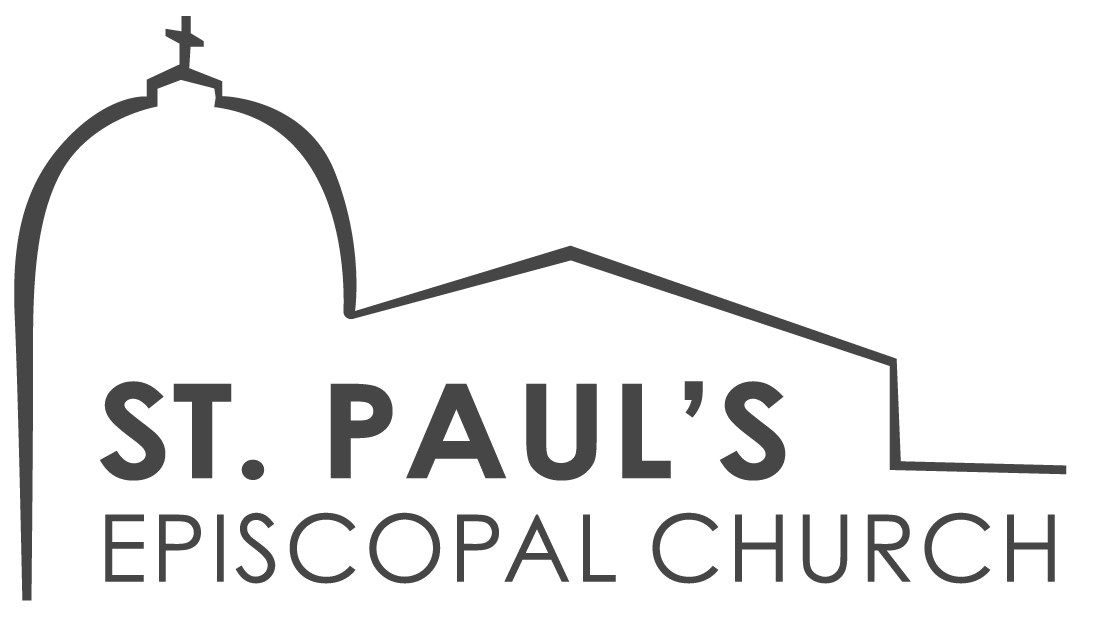History
Established as a parish in 1891, St. Paul's is one of the oldest churches in Pomona, California.
St. Paul’s, Pomona was not organized as a parish until 1891, but Episcopal services were held in the Pomona Valley as early as 1876 by the Rev. Charles F. Loop. Fr. Loop first held services in his home, then later rented a store in Pomona on Second and Thomas Streets. Since Fr. Loop was considered a missionary to Southern California, the Rev. Peter S. Ruth is listed in the parish records as the first rector of St. Paul’s. It was Fr. Ruth who was primarily responsible for firmly establishing the church in the Pomona Valley.
In 1878, Fr. Ruth gave the church a lot on the corner of Forth and Thomas Streets upon which a church building was partially erected. It was, however, not completed and was moved to Lordsburg (present day La Verne). The work of completing a church building was left to the Rev. J. D. H. Brown toward the end of 1884. Fr. Loop and Fr. Ruth both took part in the laying of the cornerstone of this 1884 structure, which was completed later that year. Largely through the efforts of Mr. Joseph R. Garthside, the solid wood frame structure, which served as the main church building, was completed. This building stood for forty-five years.
The cornerstone of the old church was moved in 1923. Enclosed in it was a tin box “time capsule” which no one remembered having been put there. The box contained contemporary editions of three weekly newspapers; the Times-Courier, the Index, and the Progress. Also included was an addition of the Book of Common Prayer, a Bible, and a copy of the Episcopal Annual which contained addresses, names, and a list of church organizations existing at that time. Later, this cornerstone was moved to the southeast corner of the Garth in the new and present church building, at Gibbs and Alvarado Streets.
The Rev. Bertram A. Warren was rector of St. Paul’s from 1927 to 1941. During this term of office the new and present church building was constructed on the southwest corner of Gibbs and Alvarado Streets. At the deconsecration of the old church building, which was on the corner of Fourth and Thomas Streets, a special service was held. Fr. Warren conducted the service in which the various important church furnishings were carried by hand to the temporary quarters on the ground floor of the Pomona Community Building.
The old St. Paul’s structure, which had been used for forty-five years by the parish, was sold to the Federal Government in 1930 for $25,000. The Parish hall of the old church was sold to the Christadelpians and moved to Gibbs and 9th, where it is still in use for their services.
The new church complex is still impressive today, but it was a special feat to construct such a plant during the depression.
The architect was Carlton Monroe Winslow, and the contractors were Steed Bros., Inc. Under the Rt. Rev. W. Bertrand Stevens, the corner stone was laid on Dec. 14, 1930. Bishop Stevens dedicated St. Paul’s on April 5, 1931. It was not until 1943 that a drive was initiated by Can. Marshall to pay off the mortgage. The drive to pay off the debt was evidently inspired by the easier money situation of that year. Consecration of St. Paul’s did not take place, however until May 19, 1946. That date just happened to be the 70th Anniversary of the parish. In actuality, the drive to have a debt-free church was partially inspired by the Jubilee Banquet of 1941. Two former rectors of the parish, the Rev. Thomas C. Marshall and Bishop Clark, were in attendance at that occasion.
On July 23, 1961, a $143,000 addition to the church offices gave the edifice its present, rather incongruous appearance. This construction provided new classrooms along the west side near the parish hall and added heating-ventilation to the church building proper. The church itself retains its original rural gothic design, while the new additions stand in stark modern contrast.
It is with the forward movement of a future that is led by the Holy Spirit, inspired and directed by the life of Jesus Christ, and ordered by the tradition of the Protestant Episcopal Church, that St. Paul’s Pomona, can claim it attempts to be a Christian witness in the Pomona Valley.


